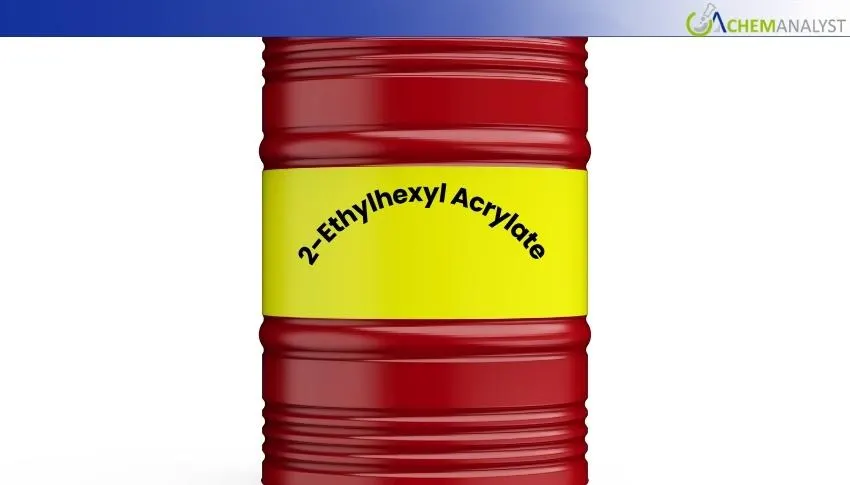Welcome To ChemAnalyst

At the end of October 2025, the price of 2-ethylhexyl acrylate (2-EHA) in China showed a significant drop of 3.6% which was a result of a variety of bearish factors coming from the feedstock acrylic acid sector. The price of 2-EHA, which is a major derivative of acrylic acid, is interlinked with the dynamics of cost and supply-demand of its feedstock. Since acrylic acid was downtrodden, the industry felt the effect and 2-EHA was also dragged into a prolonged downturn.
The strongest reason behind the price fall in 2-EHA is the collapse in propylene prices upstream. Propylene, which is the main input in the production of acrylic acid, has been witnessing a decline for quite some time, giving the manufacturers a significant cost-cutting opportunity. This change took away the rigid cost support that normally protects pricing across the supply chain. With the production costs for 2-EHA not limiting them anymore, the acrylic acid producers must walk on the pricing line and oftentimes reduce their prices to keep the cash flow and encourage the demand.
The loss of cost support has a direct effect on 2-EHA which is produced by the reaction of acrylic acid and 2-ethylhexanol. When the price of acrylic acid went down, the cost of making 2-EHA went down too and hence the suppliers were forced to reduce their prices to be in competition. However, this tactic has not been very effective as the demand from the downstream industries is still quite feeble.
Coatings, adhesives, and superabsorbent polymers (SAP)—the key consumers of 2-EHA—have been quite careful in their purchases. A large part of the buyers is uncertain, many of them are buying only the minimum required very close to when they need it, gradually by “just-in-time” method instead of stocking up. Even though there was a slight increase in operating rates after the holidays, the actual transaction volumes have not been sufficient to clear the market's large supply problem. The 2-EHA market has thus descended into a negative spiral: lower demand results in lower prices, which reinforces the reluctance of buyers.
Traders in the market state that the activity of buying and selling has almost come to a standstill; Many of the customers, which are further down the line, have decided not to buy anything until the prices drop even more. This wait-and-see tactic has led to competition among suppliers becoming fiercer, and they are now pushed to give bigger price cuts to get the orders. Thus, the price centre of the 2-EHA market keeps shifting downwards, and there are no immediate signs of stabilization.
To sum up, the situation in China’s 2-EHA market is very similar to a downward spiral which has been caused by the combination of upstream costs collapsing, poor downstream demand, and cautious trading behaviour. Unless there is a change in these fundamentals, the bearish trend may continue.
As per ChemAnalyst, the situation for 2-EHA is still very negative when it comes to the future. The weak upstream situation in propylene and acrylic acid will be the same for a while and will not give any cost support. The lack of an adequate recovery in the downstream demand will cause an overabundance of supply to continue to lower prices. People in the industry believe that the rude and weak nature of the market will last for some time and will be determined either by a fundamental change in the patterns of consumption or a reversal in feedstock trends.
We use cookies to deliver the best possible experience on our website. To learn more, visit our Privacy Policy. By continuing to use this site or by closing this box, you consent to our use of cookies. More info.
